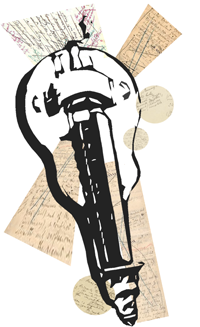While traveling in England, our group stopped at the ruins of Fountains Abbey. Truly an immense construct, the main building alone was the size of a cathedral. Taking into account its crumbling outbuildings, it covered a goodly amount of space. The Abbey possessed that perfect blend of ruin and remains that makes a structure not only look, but feel ancient. And I know the rest of the group thought that way, because all they did during that stop was chatter incessantly.
Ancient buildings seem to have a peculiar effect on a dimension we cannot see, exerting a weight on the universe that is palatable, but immeasurable. For argument’s sake, let’s say that it is the space-time continuum they effect. This effect is generated by the discrepancy between the era of the viewership, and the era of the building in question. All things have a place in time, and preservation, whether artificial or natural, distorts the effect of the continuum by pulling things from their proper place and placing them in ours, an effect compounded by direct observation, of course, because if no one acknowledges an ancient building, it isn’t ancient, is it?
The effect only increases with passing years, as the distance between the building and its proper location in the continuum grows, and its becomes heavy, for lack of a better word, as the power that keeps it locked into its new location must grow in proportion. This weight can be felt by anyone, and often without much effort. Little more than a cursory glance at a structure is enough to trigger the effect, as a rotting ruin, under the gaze of a modern tourist, is forced to transform in a 12th century abbey again.
The weight is troublesome to the modern tourist, for it signifies more than just age. It signifies power. Whether we acknowledge it or not, the “weight of history” is the manifestation of a physical mark on the continuum. To actually effect space-time is a massive feat, and it frightens us. In the same way mountains terrify for their scale, or space terrifies for its volume, history terrifies for its presence. Coming into contact with it generates a primal fear in our hearts, a fear felt by early man when a monsoon ravaged his islands, and earthquakes shook his lands. These were the works of gods, ancient beings that strode the earth cloaked in fire and destruction, forging the land anew with every season. These things bred a terrible fear: that we were powerless in the face of history.
However, man is, first and foremost, combative. Early man fought back against his impotence by constructing monuments venerating their gods, their leaders, and their beliefs. They put their own mark on the greater canvas of the world. Whether they knew it or not, they strove for the same power their deities wielded, the power to shift landscapes and humble the minds of men. And now the Millennial generation has to cope with those attempts of our ancestors, many of whom succeeded. We, the youngest and weakest in the world, are asked to cope with the time-bending awesomeness of history. So what is our coping mechanism? Regrettably, the only answer we have is chatter.
This defense mechanism comes into full force when confronted by entities such as Fountains Abbey, when the scope of true weightiness becomes painfully apparent, and we seek validation by attempting to stopper each and every moment with a ceaseless barrage of vapid observations, anecdotes, exclamations and commentaries, struggling to fill the massive pressure of time with our presence, only to have our words be swallowed up by the sinkholes of things more relevant. Frankly, it’s exhausting to listen to, and just a little bit sad to see people’s attempts to generate their own weight without realizing their words have about as much impact as packing peanuts. So while I attempted to bask in the historical outgoing tide of Fountains Abbey, the water around me was constantly littered with verbal trash, entirely spoiling the view and the impact.
Banner photo by Michael D Beckwith on Unsplash




